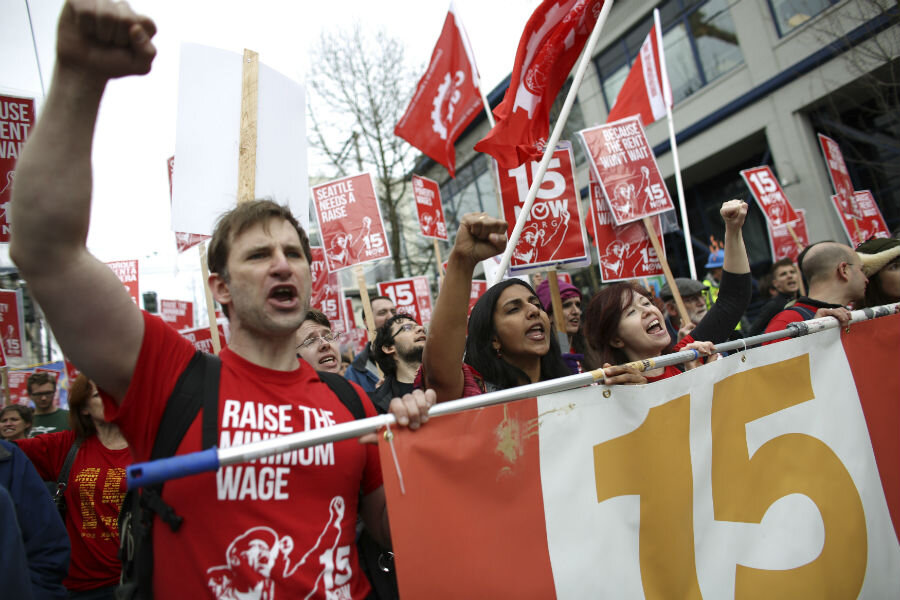Black and white wage gap growing significantly, analysis says
Loading...
The wage gap between black and white workers has grown by 32 percent in the last three decades, according to an analysis released Tuesday by the Economic Policy Institute (EPI). The widening disparity is most deeply felt among college-educated workers, EPI says.
In comparing the average hourly wages of black and white workers, the Washington, D.C.-based, liberal think tank took into account where workers lived, their education levels, and professional experience. It found that in 2015, black men earned 22 percent less overall than white men, an increase from a 17 percent disparity in 1979.
In comparing women, EPI found that black women earned nearly 12 percent less than white women last year. In 1979 – when wages for all Americans started moving in the opposite direction of growing productivity – the wage gap between black and white women was only 4.5 percent. Compared to white men, black women earned 34 percent less last year.
Overall, the typical white worker in the middle of the income scale earned $25.22 an hour last year, while the average black worker in the same category earned $18.49, according to Bureau of Labor Statistics data analyzed by EPI.
“People should be troubled and really question why we would observe this pattern through 2015,” Valerie Wilson, director of EPI’s Program on Race, Ethnicity and the Economy, told the Huffington Post. “Is the American dream really obtainable – equally obtainable for all people?”
After adjusting for practical factors that typically influence how much a person gets paid, the EPI concluded that the wage disparity comes largely from discrimination.
"What else could it be rather than discrimination? There’s this big piece of the gap that we can’t explain," Dr. Wilson tells The Christian Science Monitor.
She and her co-author of Tuesday’s report, William M. Rodgers III, public policy professor at Rutgers University, suggest among other recommendations that there should be stronger enforcement of anti-discrimination laws in hiring, promotion, and pay of women and minority workers.
Their analysis comes at a time when wages have been declining for all Americans over the decades, particularly since 2007. Additionally, there are more college graduates than the labor market can handle, which makes it easier for employers to discriminate, EPI says. That could be part of the reason that the wage gaps have expanded most for black college graduates, who already start with lower pay than whites.
While these economic trends are troubling, there are slight signs of hope. Last year brought the first signs of wage relief in a decade for all Americans. The overall median household income rose by 5 percent from 2014 – an upward trend that held across races, regions, and income groups, according to the US Census Bureau.
Hispanic workers saw the most growth in their incomes between 2014 and 2015, or 6 percent, from $42,540 to $45,148. This was followed by a 4.4 percent growth (from $60,325 to $62,950) among whites. Blacks saw a 4 percent growth (from $35,439 to $36,898) last year, and Asians a 3.7 percent (from $74,382 to $77,166) income increase.
As EPI reported last week, the wage gap between men and women overall has shrunk: women earned 74 percent of men’s wages in 2000, and 80 percent of men’s wages by last year. But the positive trend was not a result of declining inequality, as the institute pointed out in a separate analysis.
“Unfortunately, the little improvement that has occurred since 2000 was due mostly to men’s wages stagnating, rather than both genders seeing wage growth with women’s wages growing even faster,” wrote EPI in its report.
States like Massachusetts are testing creative policy approaches to close this persistent gap. Last month it became the first state to bar employers from asking job applicants about their previous salaries in order to level the playing field for women and minorities who are more likely to have started their careers with a pay disadvantage.










